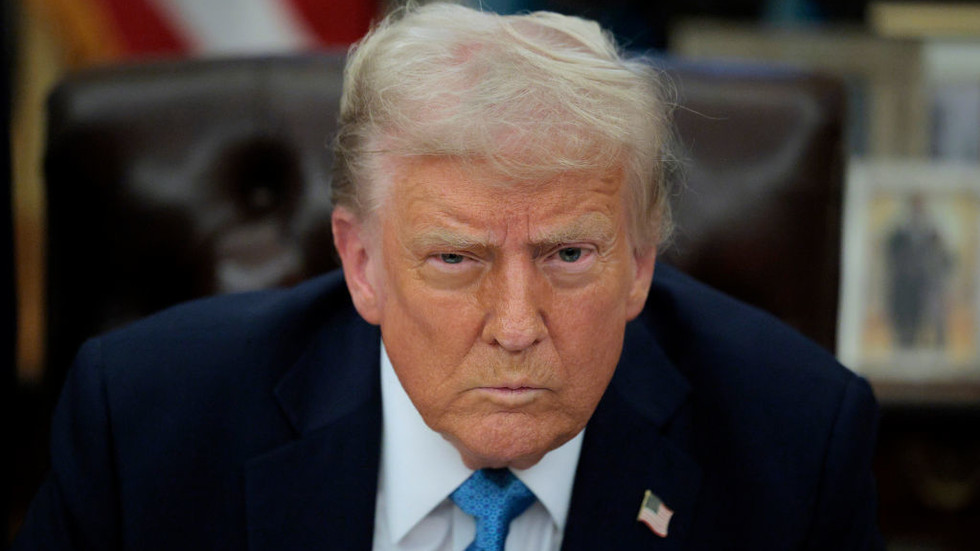Navigating the Economic Impact: Trump’s Warning on Tariffs
In a recent statement, former President Donald Trump issued a stark warning regarding the potential repercussions of tariffs on the economy, suggesting that these trade measures could inflict “some pain.” This declaration has reignited discussions about the broader implications of tariffs for American consumers and businesses alike. As we delve into the complexities of tariff policies, it becomes essential to understand their multifaceted economic impact, not just on imports and exports, but also on the everyday lives of Americans.
The Mechanics of Tariffs
Tariffs, essentially taxes imposed on imported goods, are designed to protect domestic industries by making foreign products more expensive. When a government imposes tariffs, the immediate effect is an increase in the cost of imported goods, which can lead to higher prices for consumers. However, the implications of tariffs extend far beyond mere price hikes.
- Impact on Prices: Tariffs can lead to increased prices for a wide range of products, from electronics to clothing. Consumers may find themselves paying more for everyday items as businesses pass on the costs of tariffs.
- Supply Chain Disruptions: Many American companies rely on imported materials to produce their goods. Tariffs can disrupt supply chains, leading to production delays and increased costs.
- Retaliatory Measures: Countries affected by U.S. tariffs often respond with their own tariffs on American goods, creating a tit-for-tat scenario that can harm export-oriented industries.
The Broader Economic Implications
Trump’s warning about tariffs encapsulates a broader concern regarding their potential to disrupt economic growth and stability. While some industries may benefit from the protection that tariffs offer, the overall economic landscape can suffer due to decreased consumer spending power and international trade tensions.
1. Consequences for American Consumers
When Trump cautions about “some pain,” he is likely referring to the strain that increased prices can impose on American households. Here are some critical considerations:
- Higher Costs for Consumers: As businesses face increased costs due to tariffs, they often pass these expenses onto consumers. This could mean higher prices for essential goods like food, clothing, and electronics.
- Reduced Purchasing Power: With prices rising, the average consumer may find their purchasing power diminished, leading to a decrease in overall consumer spending, which is a vital component of the U.S. economy.
- Impact on Savings: Families may be forced to cut back on savings or discretionary spending, which could impact their financial health in the long run.
2. Business Responses to Tariffs
Businesses also face significant challenges stemming from tariff policies. Here are some of the ways they might respond:
- Reassessment of Supply Chains: Companies may look to shift their supply chains to mitigate the effects of tariffs. This can involve sourcing materials from countries not subject to tariffs, which may lead to increased operational complexity.
- Innovation and Cost-Cutting: To maintain profit margins, businesses might accelerate innovation or implement cost-cutting measures, potentially affecting employment and wages.
- Market Adjustments: Companies that rely heavily on exports may face challenges in foreign markets due to retaliatory tariffs, prompting them to adjust their strategies.
The Political and Economic Landscape
Trump’s comments on tariffs are situated within a larger political and economic discourse. The interplay between protectionist policies and global trade dynamics is intricate and often contentious. Here are some key points to consider:
1. Global Trade Relationships
Tariffs can strain relationships with trading partners, leading to a breakdown in negotiations and increased tensions. In a globalized economy, the interconnectedness of markets means that tariffs can have far-reaching consequences.
2. The Role of Domestic Policy
The current political climate often influences tariff policies. Trade wars can become a tool for political gain, but the long-term economic effects can be detrimental. Policymakers must balance the need to protect domestic industries with the potential risks to overall economic health.
Looking Ahead: The Future of Tariffs in America
As the debate around tariffs continues, it is crucial to consider the long-term implications for the American economy. Here are some possible scenarios:
- Potential for Continued Tariffs: If tariffs remain in place, consumers may need to adapt to higher prices as businesses adjust to the new economic reality.
- Shift Towards Free Trade: Conversely, there could be a shift back towards more liberal trade policies, promoting free trade agreements and reducing tariff barriers.
- Increased Economic Resilience: Businesses may innovate and adapt to withstand the pressures of tariffs, potentially leading to a more resilient economic landscape.
Conclusion
In summary, Trump’s warning on tariffs serves as a crucial reminder of the potential economic pain that such policies can inflict on consumers and businesses alike. The complexities of tariffs extend far beyond the immediate financial implications; they can reshape supply chains, alter consumer behavior, and impact international relations. As we navigate this intricate economic landscape, it is essential for policymakers, businesses, and consumers to remain vigilant and informed about the potential consequences of tariff policies. By understanding these dynamics, we can better prepare for the future and work towards a balanced approach that fosters both domestic industry and global trade.
See more CCTV News Daily



